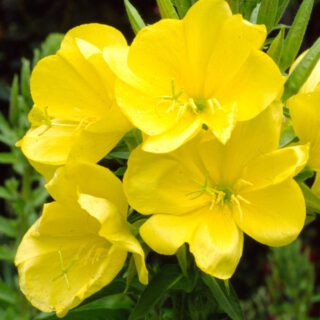How to Grow British Giant Iceberg Lettuce from Seeds
British Giant Iceberg Lettuce is a popular choice for its large, crisp heads and refreshing taste. Known for its cool climate preference, this variety is perfect for UK gardens. With its origins in California, Iceberg lettuce was initially called “crisphead” due to its tightly packed, crunchy leaves. This versatile vegetable is suitable for both indoor and outdoor growing, making it an excellent option for gardeners of all experience levels. Follow this guide to successfully sow and grow British Giant Iceberg Lettuce seeds in your garden.
When and Where to Sow British Giant Iceberg Lettuce Seeds
- Outdoor Sowing: Sow seeds directly outdoors from early spring to early autumn (March to September). This variety thrives in cooler conditions, making it perfect for UK climates. Ensure soil temperatures are between 4-16°C (40-60°F) for optimal germination.
- Indoor Sowing: For an earlier start or year-round growing, sow seeds indoors from January onwards. This allows for an early crop and provides better control over growing conditions. Indoor sowing is ideal for those looking to extend the growing season.
Ideal Growing Conditions for Iceberg Lettuce Plants
- Soil Requirements: Iceberg lettuce prefers well-drained, fertile soil with a slightly acidic to neutral pH (6.0-7.0). Before planting, enrich the soil with compost or well-rotted manure to support healthy growth.
- Sunlight: Choose a sunny location with at least 6-8 hours of direct sunlight daily. Lettuce can tolerate partial shade, especially during the hotter months, but full sun is essential for forming firm, crisp heads.
- Temperature: Iceberg lettuce thrives in cool temperatures. For the best results, maintain daytime temperatures between 16-20°C (60-68°F) and nighttime temperatures between 4-10°C (40-50°F). These cooler conditions help produce crisp, sweet heads.
How to Sow British Giant Iceberg Lettuce Seeds Indoors
- Sowing Depth and Containers: Fill seed trays or small pots with seed compost. Sow the seeds on the surface and cover lightly with a thin layer of compost, about 3 mm (1/8 inch) deep. Firm gently and water lightly.
- Germination Conditions: Place the trays in a bright, cool location such as a windowsill or unheated greenhouse. Maintain a temperature of 4-16°C (40-60°F) for germination, which typically takes 7-10 days. Keep the compost moist but not waterlogged.
- Transplanting: Once seedlings have developed 2-3 true leaves and are strong enough to handle, transplant them into larger pots or directly into their final outdoor positions. Allow a spacing of 30-35 cm (12-14 inches) between plants to ensure adequate room for growth.
- Hardening Off: Gradually acclimatise the seedlings to outdoor conditions by placing them outside during the day and bringing them in at night for 7-10 days before planting out.
How to Sow British Giant Iceberg Lettuce Seeds Outdoors
- Preparing the Soil: Choose a well-prepared seed bed, removing any weeds and raking the soil to a fine tilth. Lettuce prefers soil that is fertile and well-drained.
- Sowing in Rows: Sow seeds thinly in shallow drills, about 3 mm (1/8 inch) deep. Space rows 30-35 cm (12-14 inches) apart. Lightly cover the seeds with soil and firm down gently.
- Watering and Care: Water the seed bed gently to settle the soil. Keep the soil consistently moist throughout the germination period. Thin seedlings to 30-35 cm apart when they are large enough to handle, using the thinned plants as early greens in salads.
- Succession Sowing: For a continuous supply of fresh lettuce, sow seeds every 2-3 weeks throughout the growing season. This method, known as succession planting, ensures a steady harvest.
Caring for British Giant Iceberg Lettuce Plants
- Watering: Keep the soil evenly moist but not waterlogged. Lettuce has a high water content, so regular watering is crucial, especially during dry spells. Avoid overhead watering, as wet leaves can lead to disease.
- Feeding: After transplanting, apply a balanced, slow-release fertiliser to provide essential nutrients. Avoid high-nitrogen fertilisers, as they can encourage leafy growth at the expense of head formation.
- Mulching: Apply a thin layer of organic mulch around the base of the plants to retain soil moisture, suppress weeds, and keep the roots cool.
- Pest Control: Protect young plants from slugs, snails, and aphids. Use organic slug pellets, copper tape, or natural predators like ladybirds to keep pests at bay. Consider using cloches or netting to protect the plants from pests and birds.
Harvesting and Using British Giant Iceberg Lettuce
- Harvesting Time: Iceberg lettuce is typically ready for harvest about 75 days after germination. Check that the heads are firm and have reached a diameter of 30-40 cm (12-16 inches). Harvest in the morning for the crispest leaves.
- How to Harvest: Use a sharp knife to cut the lettuce head at the base, just above the soil level. Avoid pulling the plant, as this can disturb the roots of neighbouring plants.
- Post-Harvest Care: Remove any remaining plant debris from the bed to prevent disease and pests. Prepare the soil for the next crop by adding compost or organic matter.
- Storage: Freshly harvested lettuce can be stored in the refrigerator for up to a week. Wrap the heads in a damp cloth or place them in a perforated plastic bag to maintain crispness.
Common Issues and Tips for Growing Iceberg Lettuce
- Bolting Prevention: Bolting occurs when lettuce goes to seed prematurely, often due to hot weather or stress. To prevent this, maintain consistent soil moisture and provide shade during hot periods. Sow in cooler months for best results.
- Managing Pests: Protect young plants from slugs and snails by using organic deterrents like beer traps or copper tape. Keep an eye out for aphids and use insecticidal soap or natural predators to control infestations.
- Companion Planting: Plant lettuce alongside other vegetables like carrots, radishes, and onions. These companions help deter pests and maximise space in the garden.
Common Questions About Growing British Giant Iceberg Lettuce
- Can Iceberg Lettuce be grown in containers? Yes, Iceberg Lettuce can be successfully grown in containers. Choose a pot that is at least 20-25 cm (8-10 inches) deep with good drainage. Water regularly and position the container in a sunny spot.
- How do I prevent my lettuce from turning bitter? Bitter leaves can result from hot weather, irregular watering, or harvesting too late. Keep the soil consistently moist, provide shade during hot periods, and harvest heads while they are young and firm.
- Can I grow Iceberg Lettuce year-round? While Iceberg Lettuce prefers cooler temperatures, it can be grown year-round with proper management. Indoor growing or using cloches and greenhouses can extend the growing season into winter.
By following these guidelines, you can enjoy a bountiful harvest of crisp, fresh British Giant Iceberg Lettuce in your UK garden. Whether grown in beds, containers, or greenhouses, this versatile vegetable is a staple for salads and an excellent addition to any garden.



















